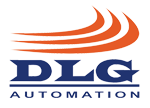Lucas de Albuquerque Pinheiro
DLG Automação LTDA
lucas@dlg.com.br
Undesirable shutdowns during the milling process cause great harm to Mills. These stoppages are due to several factors, among which failures in Logic Programmable Controllers (CLPs).
Aiming at avoiding this problem in a CPU and provide the Client with more reliability, DLG projected the automated milling system for Usina Batatais with a redundant CPU. The system consists of an automation panel for Mill-A and nine remote panels.
The Automation Panel has only two redundant Premium CPUs and the system is prepared to automatize the Mill-B, which will require only two new remotes distributed throughout the Field.
Six panels were projected and mounted with Remote Universal Modbus XM-210 scattered in the field, which enables the easy interconnection of all temperatures of the mill roller bearings. The communication between remotes and the main CLP is made by an Ethernet ring through a Gateway Modbus Ethernet LME-200 installed in each remote panel. Also were projected and distributed in the field 3 panels with Remote STB containing the ON/OFF motors and command valves, the acquisition of 4 to 20 mA signals from the field devices and the emission of 4 to 20 mA signal to the controlling devices.
The programming of all controllers and the supervisory was carried out at DLG. The mill startup was finished in 15 days during which the technicians remained at the client service on around the clock shifts.
BENEFITS OBTAINED FROM AUTOMATION
Automation made possible obtaining several advantages, among which we enhance the following:
Monitor and generate alarms for the temperatures of all mill bearings by activating the turbine trip;
Control the levels on all three-roll mills;
Control the soaking water flow;
Provide a safe inter-locking action with the quick and punctual indication the mill was unlocked.
The use of distributed remotes provides great savings of command cables and instrumentation in comparison to a system the main panel covers all IOs.
Through the Citect (Schneider) supervisory the milling operation became more simple and the acquisition of process data turned much bigger with the histories of all indications, set points and variable handled, including the alarms history. At the Management and Supervision offices a screen was programmed on the Factory Talk supervisory, the principal process variables can be visualized. You may download a copy of this article by clicking here.




